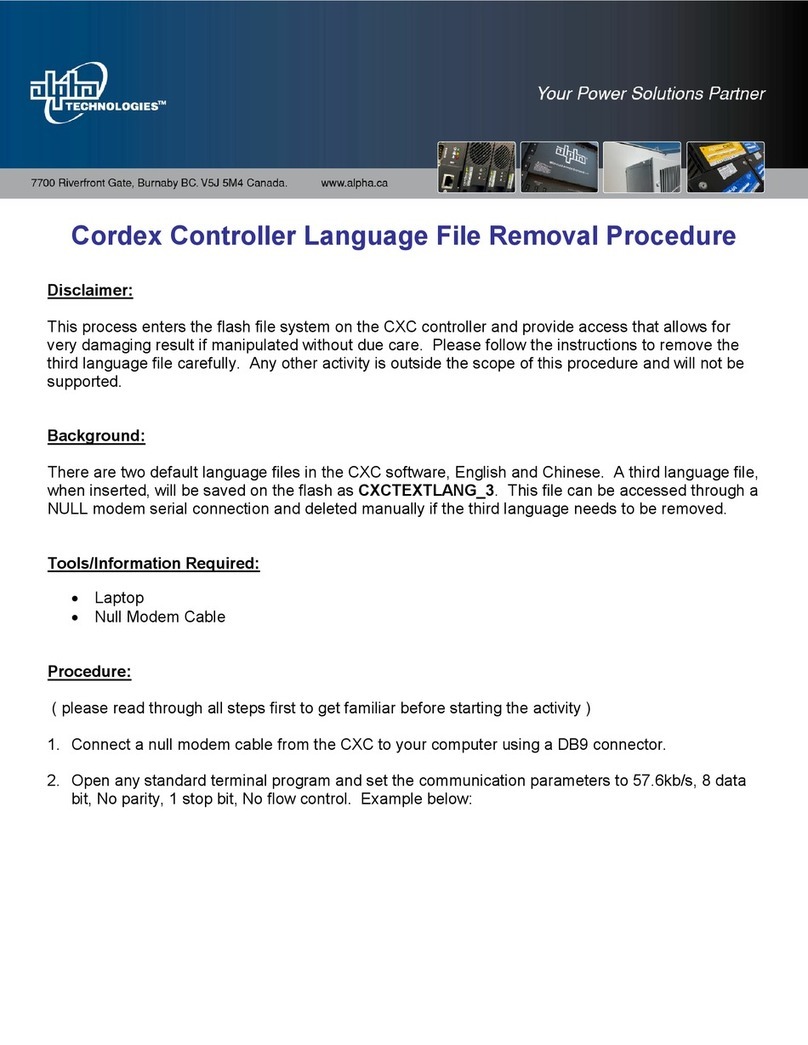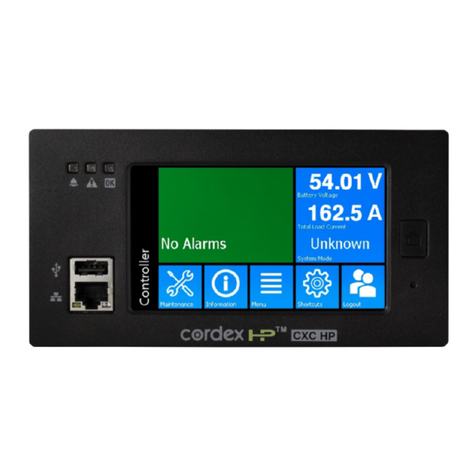
Modbus Integrator's Guide for the CXC HP
List of Tables
Table 1: Configuration...................................................................................................................................9
Table 2: Modbus Address Allocation for Common Controller Data............................................................11
Table 3: Modbus Address Allocation for DC System Data........................................................................ 11
Table 4: Modbus Address Allocation for AMPS HP System Data............................................................. 12
Table 5: Controller Data Points.................................................................................................................. 14
Table 6: Custom Data Data Points.............................................................................................................15
Table 7: Timers Data Points.......................................................................................................................15
Table 8: Counters Data Points................................................................................................................... 15
Table 9: User Alarms Data Points..............................................................................................................16
Table 10: L-ADIO Data Points....................................................................................................................16
Table 11: 6I-ADIO Data Points................................................................................................................... 17
Table 12: HV-ADIO Data Points.................................................................................................................18
Table 13: I/M1-ADIO Data Points...............................................................................................................18
Table 14: PSU-ADIO Data Points.............................................................................................................. 19
Table 15: Shunt Mux-ADIO Data Points.................................................................................................... 20
Table 16: 8R8D-ADIO Data Points.............................................................................................................20
Table 17: BDFB-ADIO Data Points............................................................................................................ 21
Table 18: E2-ADIO Data Points................................................................................................................. 23
Table 19: DC System Data Points............................................................................................................. 24
Table 20: DC System Battery Data Points.................................................................................................26
Table 21: DC System Loads Data Points.................................................................................................. 27
Table 22: DC System Disconnects Data Points.........................................................................................28
Table 23: DC System Shunts Data Points................................................................................................. 28
Table 24: DC System Current Transducer (CT) Data Points..................................................................... 28
Table 25: DC System Rectifiers Data Points............................................................................................. 28
Table 26: AMPS HP System Data Points.................................................................................................. 28
Table 27: AMPS HP System Bypass Switch Data Points..........................................................................36
Table 28: AMPS HP System Breakers/Fuse Data Points.......................................................................... 36
Table 29: AMPS HP System T2S Data Points.......................................................................................... 36
Table 30: AMPS HP System TSI Inverters Data Points............................................................................ 36
Table 31: Limited Data Set Data Points.....................................................................................................38
Page 4 0350114-J0 Rev G





























